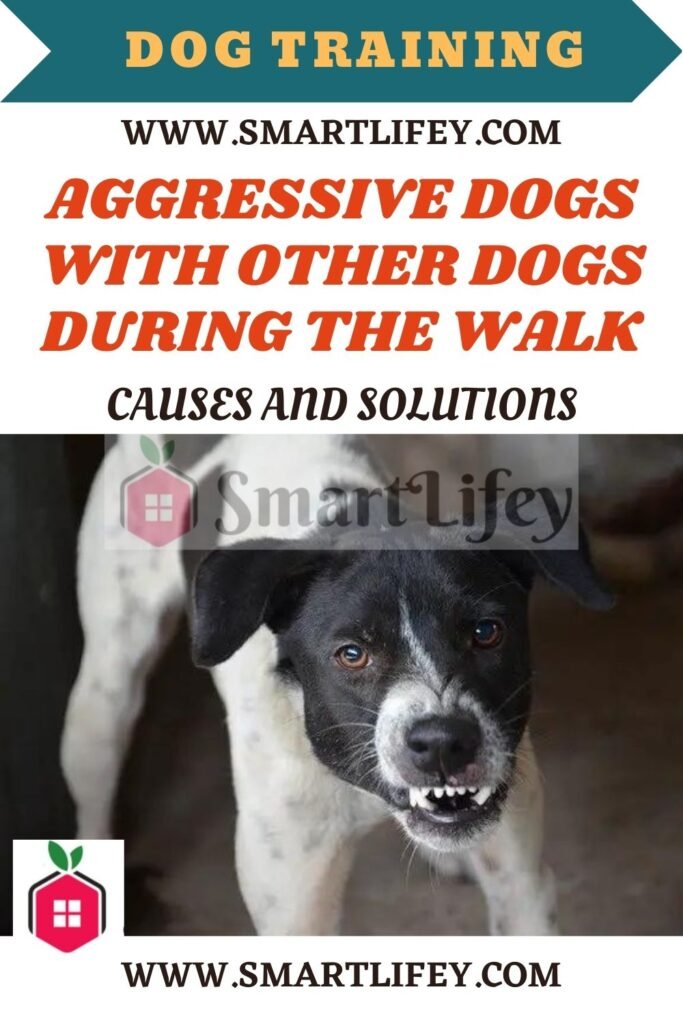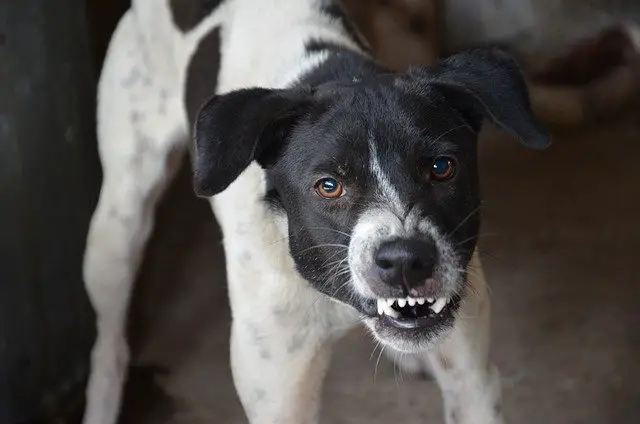The most common reason why a dog confronts other dogs during the walk is the inappropriate attitude of its owners

Here are some guidelines to ensure that the walk with the dog does not turn into a pitched battle, such as: use a harness instead of a leash, allow the dog to observe other dogs in the distance, avoid overprotection and intervention with regarding their behaviour during the walk and have confidence in their ability to follow appropriate conduct.
Tense owners during the walk, fighting dogs with other dogs
A nervous, stressed or fearful dog is the ideal candidate to cause brawls in the street with other dogs
Most of the time it is the owners themselves who unconsciously cause the dog to become upset when it meets other dogs during the walk. The fact that the dog notices that at the other end of the leash its owner is insecure and nervous when another dog approaches, it causes its territorial facet to emerge with other congeners and challenge them with teeth, growls or barks.
Fear and stress are other causes why a dog can be aggressive with other dogs during the walk. A nervous, stressed and tense dog is more likely to lose control when an unexpected situation occurs during the encounter with another dog, such as running in front of him. An unpleasant or traumatic experience with other dogs during the walk, such as aggression, can also cause the dog to develop aggressive tendencies with his peers.
But all is not lost, certain guidelines help the walk not to become a pitched battle with the challenging dog with other dogs. The following are a sample:
1. Use a harness instead of a neck strap
When the dog is held by the neck during the walk and the owner pulls on the leash, more tension is created and the dog feels more threatened, in addition to being hurt
2. Let the dog contemplate other dogs in the park
The observation of other dogs in the park, without approaching them, is a way for the dog that is challenging with other congeners during the walk to acclimatize to their presence, as well as to their body gestures and the way they interact.
In this way, the re-education of the dog with this relationship problem is softened and the tension that can be involved in a canine meeting in the street is minimized. This practice of contemplating other dogs from a distance is not a substitute for the melee relationship with other dogs, but it can be alternated with the usual walk several days a week.
Some dogs are not well socialized from puppies and, as a consequence, are unaware of the communication patterns of their peers. These dogs do not know how to interact with others in an appropriate way because they do not know the canine language. The fact that they witness how other dogs interact helps them learn.
3. Do not intervene with respect to the dog’s behavior
Cases of dogs with inappropriate behaviour in relation to other dogs are common. Especially those that are small in size , because the owners intervene too much to protect them and are too aware of them.
Since the behaviour of the dog is not always rewarded or reprimanded correctly , it is advisable not to intervene in this regard during the walk.
If the dog has attacked another dog during the walk and we reprimand and scold them, we create more insecurity, tension and fear, so it is advisable not to fall into this behaviour.
4. Avoid overprotection with dogs
Owners of small dogs tend to protect them more than necessary when during the walk there is an encounter with a larger dog . However, when the dog captures that it has the unconditional attention and favor of its owners, whatever happens, it tends to become emboldened and attract attention at the cost of facing any dog that crosses its path.
For this reason, it is advisable to be as impassive and unconcerned as possible with respect to the dog, although in reality you are attentive to the reaction of the dog during the encounter with other conspecifics while walking.
5. Transmit confidence to the dog during the walk
Sometimes, after a dog that is too territorial and reactive with other dogs during the walk, there is little confidence on the part of their owners regarding their ability to interact with other dogs without mounting a brawl.
The dog detects that insecurity and fear of its human family and interprets the message as an alarm signal, which translates into the confrontation with the other dog.
The barking of a dog that meets another does not have to imply a possible scuffle between the two. Sometimes a dog issues a warning to another that is approaching it inappropriately because it is invading your space without permission.
It can be the case of an adolescent dog or a puppy that behaves in an uncontrolled way and does not respect the protocol of the rules of relationship between dogs, such as emitting calm signals: licking the nose or looking away.
Prevent problems derived from fights between dogs during the walk

Avoiding greater evils with the fighting dog with other dogs on the street is the responsibility of the owners . A scuffle between dogs during the walk can get out of hand and end up with injuries. The culprit must compensate for damages, so it is advisable – and in cases such as dogs of potentially dangerous breeds , mandatory – to have insurance that covers these risks.
Other safety measures when walking with the dog are restraint on public roads with a leash and the use of a muzzle, if the owner considers that there may be a risk of aggression to other dogs.
